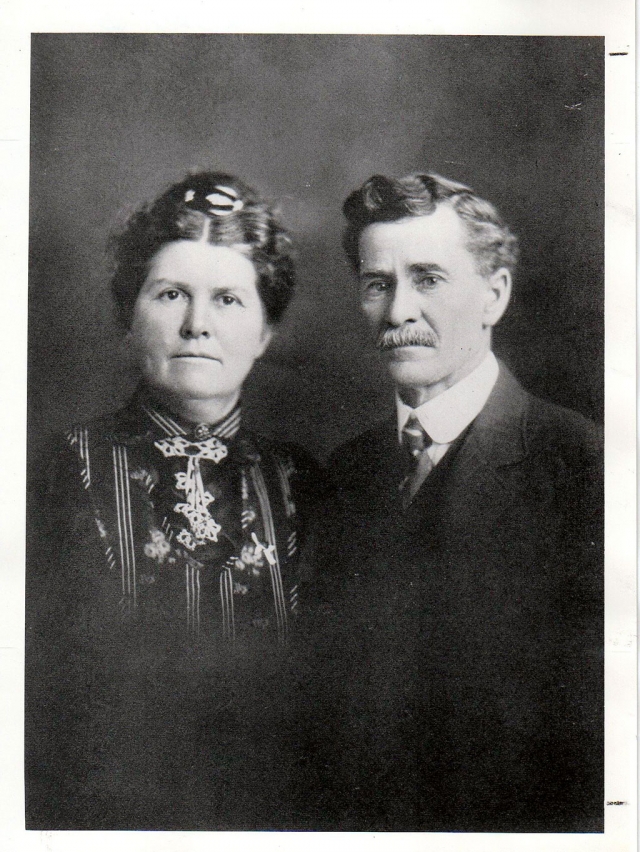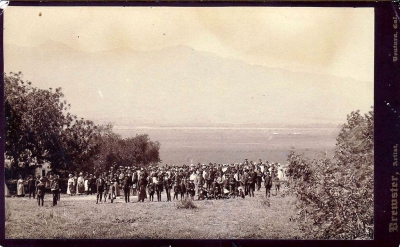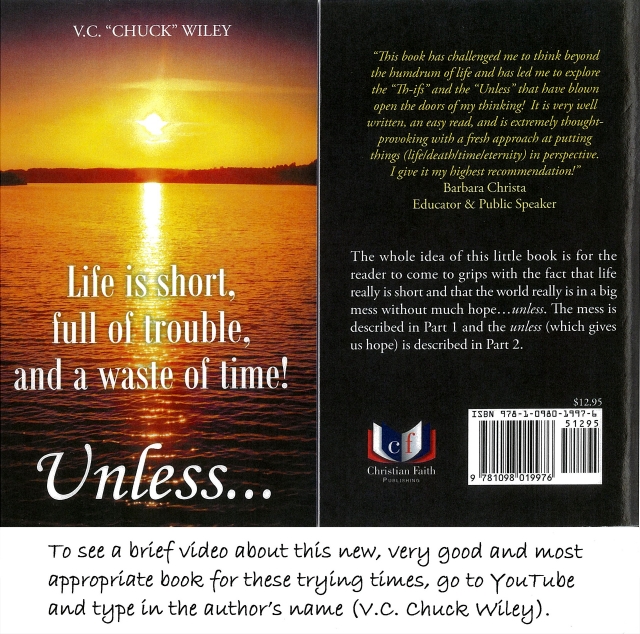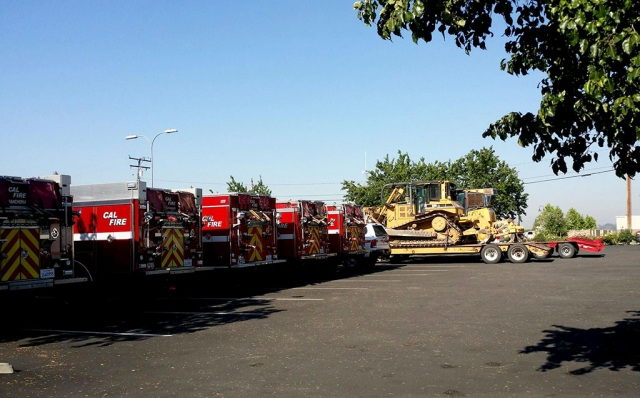|
By Nick Johnson — Wednesday, August 5th, 2020
|
|
By Nick Johnson — Wednesday, July 29th, 2020
|
|
By Nick Johnson — Wednesday, July 22nd, 2020
|
|
By Nick Johnson — Wednesday, July 15th, 2020
|
|
By Anonymous — Wednesday, July 8th, 2020
 1. Finnegan: Age 5 - Theme âGroot driving a paddle board with wheels.â On July 1st voting began for the Creative Builders Summer Contest for age category âGrade Schoolâ K-5th grade submissions. You can vote on the City of Fillmore Facebook page by clicking âLikeâ or âLoveâ for your favorite build! The most voted for picture wins a summer-themed prize! You can vote through July 9th. Most-voted-builder announced on 7/10! Courtesy City of Fillmore Facebook page. Enlarge Photo |
|
By Nick Johnson — Wednesday, July 8th, 2020
|
|
By Anonymous — Wednesday, July 8th, 2020
 The perfect thing on a hot July 4th day is lemonade, and two kids had the right idea, setting up a lemonade stand in their yard at the corner of Fourth Street & Central Avenue in Fillmore. Enlarge Photo |
|
By Anonymous — Wednesday, July 1st, 2020
The book is titled Life is short, full of trouble, and a waste of time! Unless ⊠Wiley says the whole idea of this little book (only 70 pages) is for the reader to come to grips with the fact that life really is short and that the world really is in a big mess without much hope. . . unless. So he asks the question, âWhy are we here and what happens when we die?â Part 1 presents his thoughts regarding the world and humanity, and Part 2 explores the âunlessâ which provides hope for both the present and future life. Barbara Christa, educator and public speaker said, âThis book has challenged me to think beyond the humdrum of life and has led me to explore the âTh-ifsâ and the âUnlessâ that have blown open the doors of my thinking! It is very well written, an easy read, and is extremely thought-provoking with a fresh approach at putting things (life/death/time/eternity) in perspective. I give it my highest recommendation!â Just a few months after graduation, Chuck joined the US Air Force and served four years. After that he started his college education at Pacific University in Forest Grove, Oregon, then finished with a BA degree in Sociology/Criminal Justice at The University of Texas in Arlington, Texas. He has served as both a juvenile and an adult probation officer; operated an emergency shelter for children for CPS; was director of a facility for the homeless; has been a teen court coordinator; started and operated a facility for developmentally challenged adults; worked with the Boys and Girls Clubs of Fort Worth, Texas; and taught in public schools. He has also written technical manuals describing how to operate and repair fighter jets, helicopters and postal equipment. In addition to the book, which is available from Amazon and Barnes and Noble, he has written parenting material for parents and character development material for kids that has been used by thousands in social service agencies, schools and the courts in Texas, Arkansas and Missouri. Feel free to contact Chuck by email at cwiley@kitcareserv.com or by phone (817)479-6321 (itâs a land line). |
 (l-r) Hattie Virginia and her husband George N. King. Photos courtesy Fillmore Historical Museum. Enlarge Photo By Anonymous — Wednesday, June 24th, 2020
 A gathering held in Bardsdale in 1890. The crowd is looking across the Santa Clara River towards Fillmore. Enlarge Photo [Story & photos courtesy Fillmore Historical Museum] Mrs. George King, known as Hattie, was born Harriett Busick in El Dorado, California, the daughter of a pony express rider. She came to Bardsdale at age 12 to live with her aunt, Mrs. S. A. Guiberson. She married George King, who was property agent for Thomas Bard, in 1896. Together they had two daughters, Ona and Agnes. Mrs. King had many interests but two were the Womenâs Christian Temperance Union (when she registered to vote it was as a member of the Temperance Party while her husband was a registered Republican), and education. She financed the construction of building that was used for the first high school in Fillmore while the permanent building was completed. This is an excerpt from a History of Bardsdale Mrs. King wrote in either 1915 or 1922. An Excerpt from The History of Bardsdale By Hattie Virginia King (1915) |
|
By Anonymous — Wednesday, June 17th, 2020
Interface Children & Family Services' 211 has teamed up with Fillmore Unified School District and MORRIS CHEVROLET to get school lunches to kids in need. Many schools have continued offering school lunches for students who have qualified for free or reduced lunches, but some families haven't had the means to get their children to the free lunch sites every day. Interface reached out to a popular food delivery service to ask if they would help provide free school lunch delivery to the students from Fillmore Unified School District. The delivery service agreed, but shortly after realized that there aren't drivers for delivery in the Fillmore area, leaving many at risk children even more vulnerable to food scarcity. Interface's 211 Assistant Director, Angela Barosso said, "We thought it was such a worthy program, we didn't want to tell Fillmore we couldn't do it, so we decided to do it ourselves while still trying to find help from other agencies." Until a reliable food delivery solution could be identified, three of 211's Specialists volunteered to start delivering a week's supply of lunches to eligible children and families. The volunteers delivered for two weeks in a row but continuing to deliver these door to door lunches would require a new partnership and collaboration between caring community entities. Interface's 211 Director, Kelly Brown, reached out to former Fillmore Mayor and Interface board member Manny Minjares, who connected 211 with Bill H. Morris of MORRIS CHEVROLET who quickly responded to the call for assistance. Morris recruited 3 volunteer drivers who used the MORRIS CHEVROLET vans to pick up 100 bags for 54 families over the last two weeks. In addition to this service, Morris has been providing medical appointment and other transportation needs, exposing a stark reality of lack of transportation services available to vulnerable populations across our communities, particularly in rural areas. Jason Corona, the Director of Child Nutrition Services at Fillmore Unified said, "Our Child Nutrition Services staff have really been amazing in all this to prepare 2000 meals bags in a few hours with the support from the Superintendent Dr. Palazuelos. Our families have really appreciated the help 211 and MORRIS CHEVROLET has been providing." The school lunch services will continue through the end of July, and MORRIS CHEVROLET said they are happy to help as long as they can. 211 is proud to partner with the Fillmore Unified School District and MORRIS CHEVROLET to create innovative solutions during these challenging times. About Interface Children & Family Services Interface's core program areas are: Mental Health and Trauma Treatment, Domestic Violence Intervention and Child Abuse Prevention, Youth Crisis and Homeless Services, Human Trafficking Intervention, Reentry Services, Early Child and Family Development, and 2-1-1 Information and Assistance. The agency has pioneered several programs including launching California's first 2-1-1 call center, initiating Ventura County's Pay for Success Program, and was one of the first agencies in the state to open a domestic violence shelter. Interface opened the only human trafficking shelter for adults and is the only state funded provider of child abuse treatment in the region. The agency operates out of five locations including Camarillo, Moorpark, Oxnard, Santa Paula and Thousand Oaks, and will be providing early education and parent support at an additional 13 First 5 Neighborhoods for Learning Powered by Interface sites. This important work is sustained through donations and grants from individuals and organizations, as well as by the work of dedicated volunteers and staff. For more information please contact Interface Children & Family Services at 4001 Mission Oaks Blvd, Suite I, Camarillo, CA 93012 by telephone at 805.485.6114 or visit www.icfs.org. |
|
By Anonymous — Wednesday, June 17th, 2020
 This past week Two Rivers Park and Fillmoreâs County Fire Station was fuddled with Firefighters and their equipment from all over the county to help fight the Lime fire in Piru which began on Wednesday, June 10th. Enlarge Photo |
|
By Anonymous — Wednesday, June 17th, 2020
Courtesy Fillmore Rotary Club They also presented Rotary Scholarships to Fillmore High School Seniors Ariana Ocegueda, Erin Overton, Isabella Palazuelos, Anahi Andrade and Jared Schieferle. And announced the recipient of the Rigo Landeros Service Above Self Scholarship to Isabella Palazuelos and the âDon and Ruthie Gunderson Scholarship to Erin Overton. The Interact Club, of Fillmore High School participated in the Rotary 4-Way Test Essay Contest and the winnerâs essay was sent on to the Rotary District contest. Cindy Blatt announced the First Place winner of both contests, Isabella Palazuelos! |
|
By Anonymous — Wednesday, June 17th, 2020
What occurred in Minneapolis was deeply troubling, and, along with the rest of the world, we found it difficult to watch. We condemn police brutality and will not tolerate racism. Today we are here to tell you we stand with those who seek change so that every person of color is treated with dignity and respect. In order to truly have âliberty and justice for allâ we must work together to eliminate racism and all forms of discrimination from our society. We also hurt and have feelings of anger, frustration, and disgust that the actions of a few impact the work of so many dedicated and hardworking peace officers in this Country. This week we heard chants from some regarding all the âRacist Copsâ and saw signs proclaiming, âAll Cops are Bastards.â For years we have worked to connect with our communities and listened to their concerns. We have strived to demonstrate that law enforcement officers are human beings with families who deeply care about their communities. Now we find ourselves painted by some with a broad brush that makes it appear there is a face of hate on every peace officer. We are heartsick because we join the world in wanting a better place to live for everyone. We recognize the way to accomplish this goal is through unity and solidarity. We must come together as a community; we must listen, we must learn, and we must grow together. At VCDSA, we find racial discrimination abhorrent and we hope you will work with us to ensure that the practices and policies of peace officers reflect this. We are proud to work for departments who previously established policy and training to improve de-escalation practices. Here in Ventura County, we feel grateful and fortunate to have the support of our community. We have a community that understands funding public safety is critical to keeping our community strong and safe. We are blessed to live and work in this place that has consistently been ranked as some of the safest communities in the Country. We live in a cancel culture world and defunding the police has become a trending topic as a proposed cure for racism. Defunding police is becoming a popular cry to correct tragic mistakes similar to those in Minneapolis. Unfortunately, the effect would be contrary to the objective because defunding the police will punish innocent peace officers and make Ventura County or any jurisdiction less safe for citizens and visitors. Looking at policy and making changes that may need to be changed, training officers in diversity and culture, and most importantly, hiring the best of the best to do a difficult job, all cost money. A jurisdiction that does not spend money on public safety will hire officers who need to work second jobs to make ends meet, as was the case in Minneapolis. To defund the police will create communities that are neither strong nor safe, and we fear will eventually result in the anarchy and chaos that we witnessed with the violent riots and looting of past weeks. âWe urge you to reject the approach of defunding police as one that is dangerous to the way of life we enjoy in this County,â VCDSA President Nick Odenath says. âIn Minneapolis, officers are poorly compensated, and a review of their department policies reflects a mindset that is stuck in a different time and not consistent with 21st Century Policing. We need to assist all departments in making sure they are brought into this era of policing but not take actions that will destroy those departments that have progressed to modern policing practices. It is our hope you will join us in this call for reason and sanity and work for genuine change in those systems that do not work.â About Ventura County Deputy Sheriffsâ Association |
|
By Nick Johnson — Wednesday, June 17th, 2020
|
|
By Nick Johnson — Wednesday, June 10th, 2020
|
|
By Nick Johnson — Thursday, June 4th, 2020
|
|
By Anonymous — Monday, June 1st, 2020
2,400 new LED light fixtures will replace streetlights in unincorporated areas of Ventura County
In an effort to make unincorporated streets safer, Ventura County Public Works Agency (VCPWA) and Southern California Edison (SCE) are working together to begin work on May 26 to replace existing high pressure sodium vapor fixtures with energy efficient Light Emitting Diode (LED) lights. The project, which will take 3-4 weeks to complete, will upgrade 2,400 street light fixtures with new LED lights that have a Correlated Color Temperature (CCT) of 3000K, which exudes a warm white hue that is safer for both people and wildlife. âSCE is excited to be implementing new LED streetlights in Ventura County that will save energy and cost, and provide improved lighting conditions for residents, drivers, and pedestrians, said Rudy Gonzales, Government Relations Manager at Southern California Edison. âThe new lights provide for better vision and safety while still helping to maintain a dark sky environment.â In addition, the LED lights are much longer lasting and will save in energy and cost while also minimizing light pollution. They are Dark Sky Compliant, which means they direct more light to the ground than the sky. âInnovation is the watchword of our Ventura County Public Works Agency, as coordination and collaborations such as this with SCE, work together,â said Jeff Pratt, Director of VCPWA. âIn this case, by ensuring our unincorporated areas of Ventura County have LED lights that are safer for both people and wildlife, and to minimize light pollution.â |
|
By Nick Johnson — Wednesday, May 27th, 2020
|
|
By Anonymous — Wednesday, May 20th, 2020
VCPWAâs 8th annual Public Works Week event May 17-23 goes virtual, bringing all the bells and whistles from years prior
While Ventura County Public Works Agencyâs (VCPWA) most exciting and educational event of the year, Public Works Day, is no longer able to conduct in-person tours, students and the community can look forward to an interactive virtual tour and activities right at their fingertips. VCPWA will be providing a virtual tour of its favorite experiences, demonstrations, and materials to be utilized as an educational or social connection piece for students to learn more about the latest innovations in technology, careers, and science at VCPWA while also making it available to the whole community. The theme of this yearâs event, âEmbracing Change â A Better Way, Every Dayâ exemplifies the ability of VCPWA to adapt and grow while maintaining our mission and vision for the community. This yearâs event going virtual is just another example how we are all embracing change and making our work better each step of the way. Students, faculty and the community can look forward to the following highlights during the virtual tour including but not limited to: Composting and food waste recycling with worms A day in the life of a Hydrologist Behind the Scenes of the Moorpark Wastewater Treatment Plant Topography-how the lay of the land influences the direction that rainwater flows to the ocean and to underground aquifers Pervious Concrete; demonstration of a type of pavement that is porous enough to filter storm water, capture pollutants, reduce flooding and runoff to the ocean and re-charge underground aquifers with much needed water. Demonstration of technologies that are put to work within PWA Debris removal from a road Road repair after a storm Information on our public transit in our community Drone video and how it is used by VCPWA Kits to make your own street signs Public Works careers âWe are so excited for the opportunity to create a virtual platform for our favorite event of the year. We understand that times are tough right now, so we thought what better way to re-inspire the students, that are currently learning remotely, than to share our innovations with them virtually,â says Jeff Pratt, Director of the VCPWA. VCPWAâs National Public Works Week (NPWW) was first launched in 2012 and has grown exponentially over the years from 125 students to over 1,000 students. The Agency hopes to have an even bigger audience with the added virtual feature to engage students throughout the county as they adapt to an ever-changing learning environment. The entire community is invited to join the VCPWA Public Works Day virtual education tour which will be shared through Twitter, Facebook, Instagram and LinkedIn via a link on the VCPWA webpage https://www.vcpublicworks.org/npww. |



















